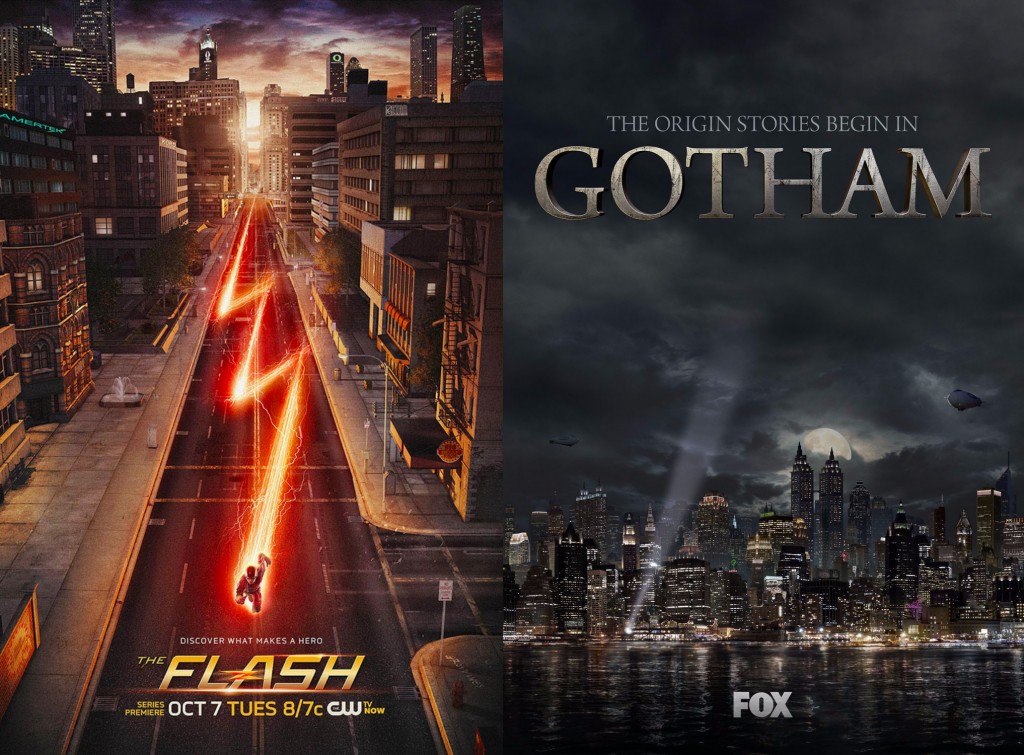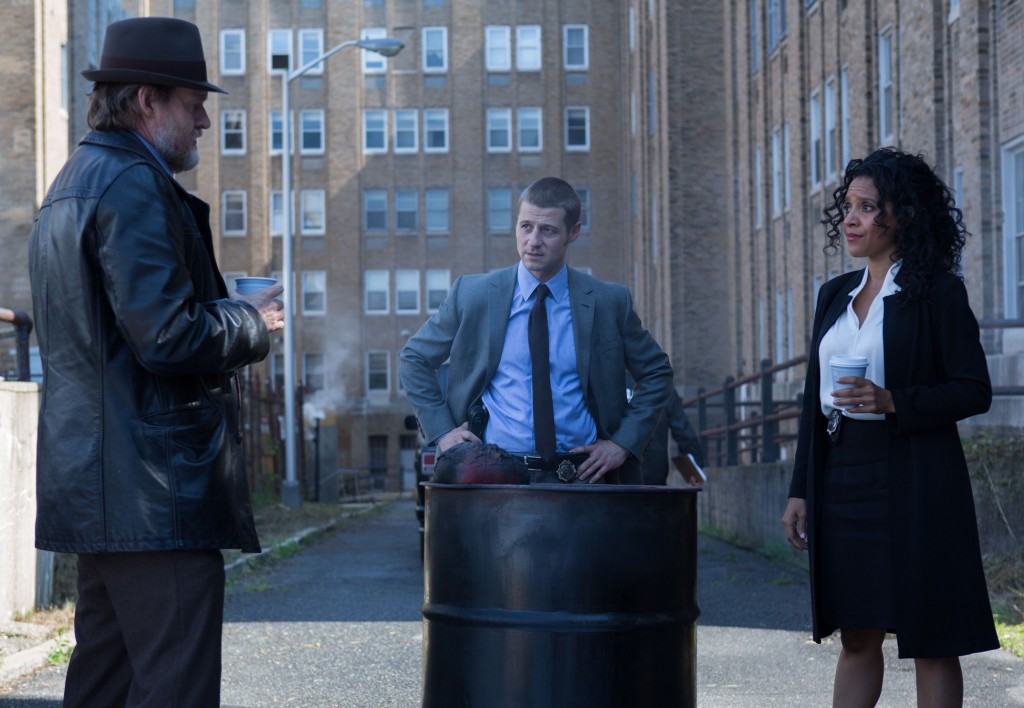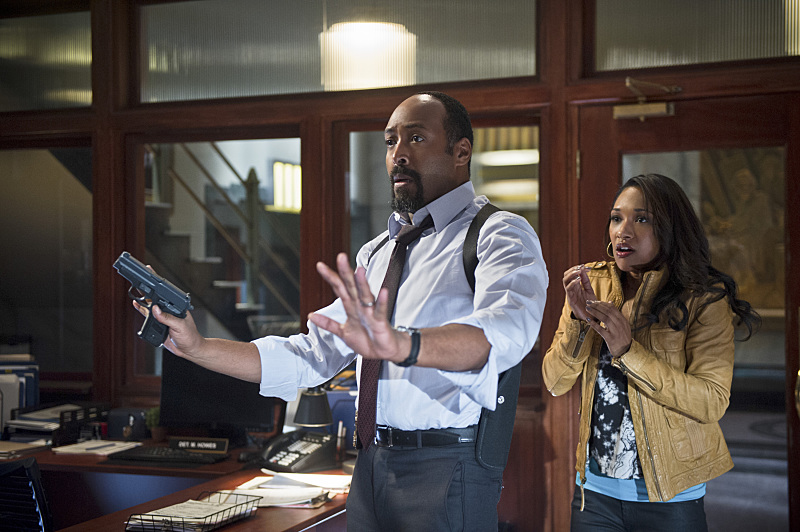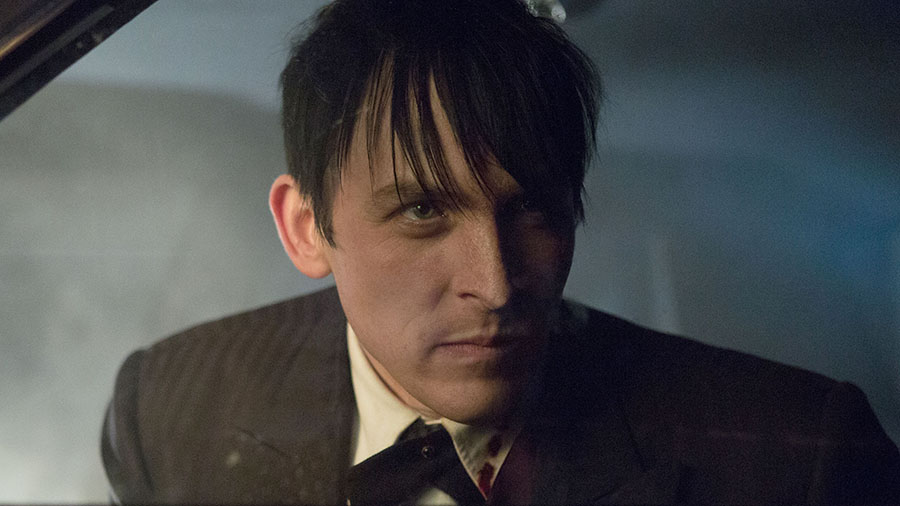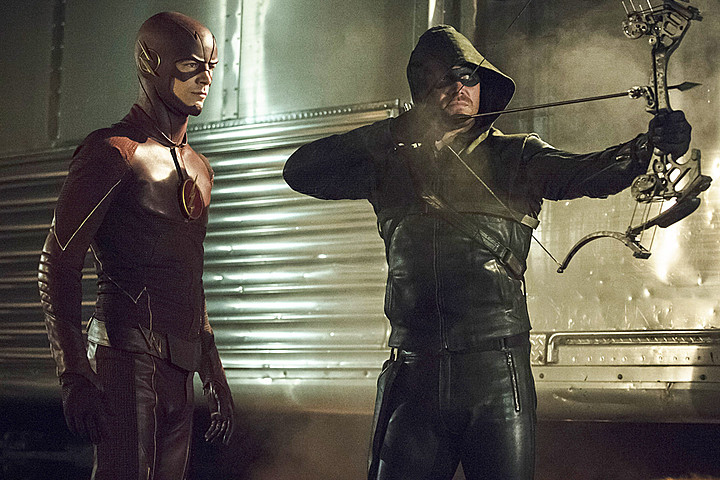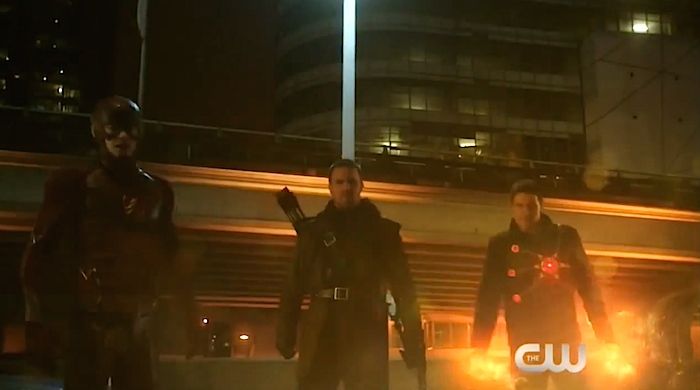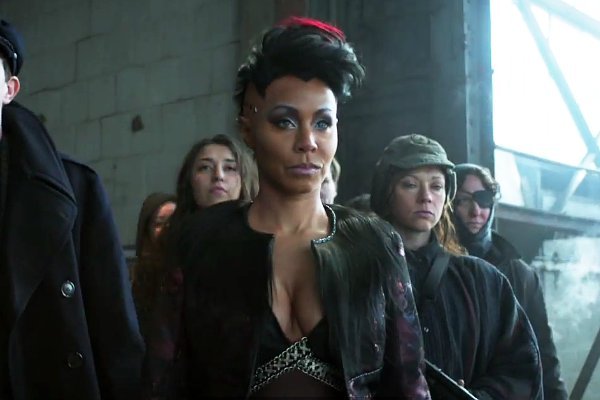The 2014-2015 television season saw the launch of a variety of different DC Comics adaptations for the small screen across a handful of networks: Fox’s creepy cop drama Gotham, the addition of CW’s The Flash alongside the third season of Arrow, NBC’s supernatural procedural Constantine (not to mention The CW’s take on Chris Roberson and Mike Allred’s Vertigo imprint series iZombie). Compared to Marvel’s television strategy, wherein all of their TV spinoffs are produced at least in part by ABC Studios and take place within the established “Marvel Cinematic Universe,” this kind of bet hedging felt like an odd choice. Although an avid fanbase was unable to save the enjoyable but ratings-wounded Constantine, the recently concluded first seasons of Gotham and The Flash were very different kinds of success stories. All this despite being, at their core, police procedurals dressed up as comic book stories.
Tonally, Gotham‘s “the world of Batman before Batman” is more akin to the lovechild of Twin Peaks (Seasons One *and* Two, for better or worse) and Dallas, while The Flash‘s adventures of The Fastest Man Alive put a new fuel-injected engine into the young-people-angsty-soap-opera body The CW has perfected.
The major point of divergence between the shows is their allegiance to the source material. The Flash is, by a wide margin, the best attempt at an unabashed superhero TV show. It is a kinetic, live-action comic book: the first season is full of CG super-speed stunts and Lichtensteinian “HE DOESN’T LOVE ME *CHOKE*” romantic entanglements, and introduces nearly all of The Flash’s famous Rogues.
While Wentworth Miller’s borderline-camp Captain Cold takes some minor liberties with his freeze gun-wielding predecessor, the show’s creators also made sure that the character’s bizarre nobility and begrudging respect for Grant Gustin’s Barry Allen remained in place. Similarly, comics villain Pied Piper’s gay identity was not only brought over from the comics but made a visible element of his multi-episode appearance. This is a TV show that not only spent an entire episode on psychic ape villain Gorilla Grodd, it went to great lengths to build up to his appearance. Whereas the Easter eggs and winks to the source material often derail or sink, say, ABC’s Agents of S.H.I.E.L.D., the season finale’s glimpses of a future Flash Museum or the golden age Flash’s wing-tipped helmet just feel like part of the fun rather than an obligation. The show even pays homage to its short-lived CBS predecessor in the casting of former Flash John Wesley-Shipp as Barry’s incarcerated father, and returning Mark Hamill to the role of The Trickster.
This isn’t to say the show is slavishly devoted to the comics, however. The decision to make Joe and Iris West, Barry’s surrogate family, African-American feels like a long overdue fix to the stagnantly WASP-y Flash canon that came out of the early 1960s.
Gotham, on the other hand, is a show that excels because it’s by and large completely uninterested in the minutiae of Batman comics. The closest we get to this are the inclusion of origin stories for the show’s equivalent of The Scarecrow and the introduction of the serum that one day fuels Bat-villain Bane, neither of which have any ancestry in comic lore.
Gotham reinvents The Penguin as a sniveling page boy for the city’s criminal elite who manages to manipulate all sides into a gang war. Robin Lord Taylor’s performance is incredible, largely because it’s a complete 180 from Danny Devito’s iconic performance in Batman Returns, in the way that Heath Ledger’s Joker gleefully departed from Jack Nicholson’s Joker. Ben McKenzie’s leading man rookie cop Jim Gordon and Donal Logue’s slovenly detective Harvey Bullock resemble their comic book counterparts in a broad sense, but both actors bring something new to the table. McKenzie’s Gordon didn’t really come together until the show realized that he was far more interesting as an almost manically noble public servant; Logue brings a buffoonish physicality to the lovably corrupt cop Bullock that’s tempered by oddly highfalutin’ vocabulary choices. Formerly minor Bat-characters like Sal Maroni and Leslie Thompkins get new life as crucial supporting characters. The show’s breakout character Fish Mooney (Jada Pinkett Smith) is even a totally original contribution to the Batman mythology, transforming from a hungry underboss into a flamboyant, heterochromatic supervillainess in her own right.
Some spoilers ahead for the first seasons of both The Flash and Gotham.
It’s also of note that while The Flash exists in the continuity established by its sister show, Arrow, Gotham doesn’t exist in any world but its own. The Flash’s first season really demonstrates what a double edged sword this is. Viewers are treated to the exact kind of shared universe benefits that even the Marvel Studios movies shy away from. Thor might be too busy to help Captain America fight HYDRA in The Winter Soldier, but Stephen Amell’s Oliver Queen and his supporting cast pop up frequently to help Barry Allen and his crew at S.T.A.R. Labs out in a jam, with Arrow and The Flash even showing up to pitch in with one another’s respective season finales. The flipside of this is that it’s a crutch that The Flash‘s showrunners lean on a little too much. Case in point: “All Star Team Up,” which centers around Arrow supporting characters Ray Palmer/The Atom and Felicity Smoak, is the season’s worst episode, largely because of how much is shoehorned in. With that said, the cool factor of Arrow, Flash, and the show’s version of Firestorm teaming up to take down Tom Cavanaugh’s nigh-unbeatable Reverse Flash is undeniable.
Despite how the different roads they take, The Flash and Gotham are bonded by some shared strengths. Both boast strong ensemble casts buoyed by great performances; the scenes Grant Gustin and Jesse L. Martin share together as they struggle to come to terms with their father-son relationship are The Flash‘s heart and soul, while Robin Lord Taylor screaming “I’M THE KING OF GOTHAM!!!!” from a rooftop after finally dispatching rival Fish Mooney is appropriately goofy in its triumph. It’s also impressive that both shows manage to successfully use CG effects on a television budget. The aforementioned “Grodd Lives” episode of The Flash had to show us a walking, menacing evil gorilla and it pulled it off admirably, while Gotham‘s subtle digital tweaks to its New York City filming locations make for breathtaking, personality-filled establishing shots.
It’s also notable that the both show’s greatest weaknesses are their female characters. Although Pinkett Smith’s Fish Mooney is Emmy-worthy, she’s also handily dispatched in the season finale with no indication of a return. The Flash‘s Candice Patton does her best as Iris West, but the show leaves her unable to divine important plot details for most of the season, which doesn’t say much of her effectiveness as a character or as a quote unquote investigative reporter. The Flash‘s other women are either acceptable recurring characters (the criminally underused Linda Park), evil (Flash Rogues Peekaboo and Golden Glider), nags (Caitlin Snow), or dead (Barry’s mother, and redeemed villain Plastique). The first season of Gotham‘s biggest problem is Erin Richards’ Barbara Kean, a character who went from essentially never leaving her apartment to being bossed around by children to turning into a full-on bad guy. It’s clear the show’s creators had no idea what to do with her, an unlikeable character who isn’t blessed with the kind of scene-chewing potential of the rest of the cast. Her apparent conversion into one of Gotham’s many murderous psychopaths felt like a breath of fresh air but stinks of some underlying hostility toward women from the writing staff.
What’s ultimately great about The Flash and Gotham being on television at the same time is that it demonstrates that viewers can have their cake and eat it too. The biggest complaint lodged at Marvel’s ambitious movie and television universe is that there’s a feeling of “sameness.” Whether you agree with that or not, it’s undeniable that DC Entertainment’s decision to diversify their TV portfolio has paid off in a big way.

